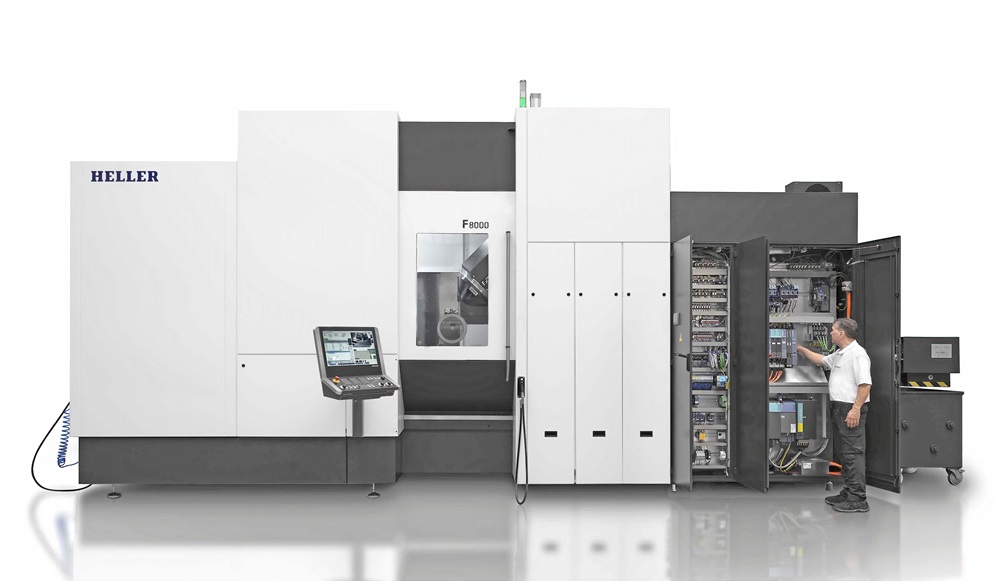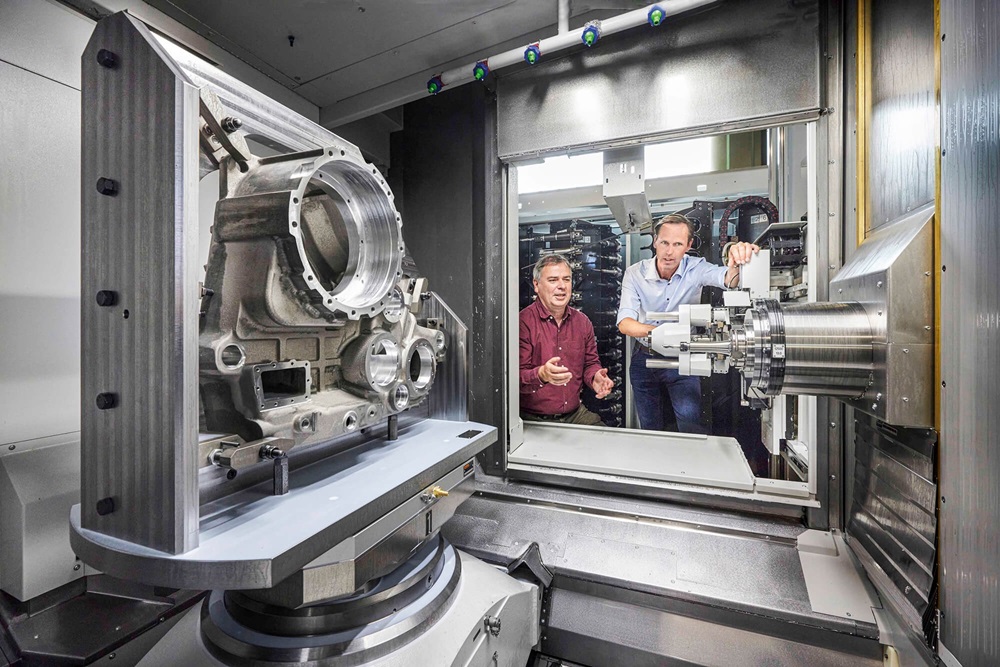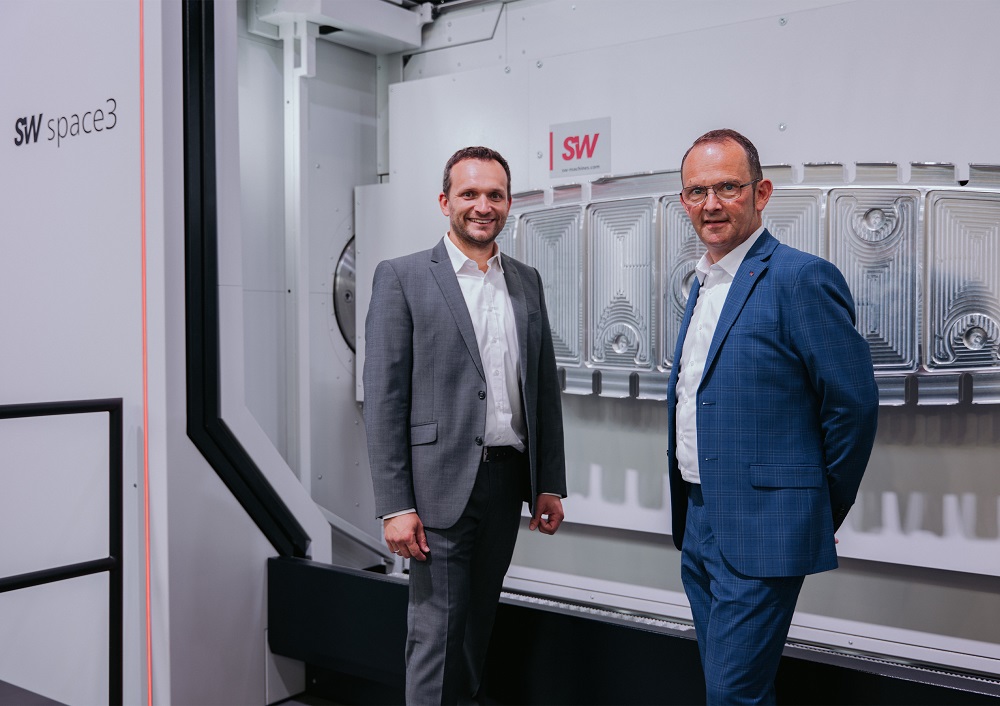Following the introduction of its F 5000 and F 6000 five-axis machining centres, Heller has extended the company’s latest-generation series with the addition of a larger capacity model, the F 8000. According to Heller, the F 8000 is suitable for everything from single part manufacture to flexible series production, 24/7.
The machine is capable of producing parts within a 1400 x 1200 x 1400 mm working envelope, the X-axis stroke being 150 mm longer than that of its predecessor. Nevertheless, the new machine occupies a 25% smaller, narrower footprint, thanks in part to a new design of rack-type tool storage. Users can now place four machines side by side, rather than the previous maximum of three.
If a manufacturer purchases an optional, enhanced-specification PRO version, it will benefit from a machine with 50% higher linear axis acceleration at 6 m/s², reducing chip-to-chip time by approximately 30%. The PRO package also offers greater precision, with positioning tolerance in X/Y/Z of 6 µm, representing a 25% improvement over the former model.
Equipped with an automatic pallet changer as standard, the new machine utilises 800 x 800 mm pallets, although it also is possible to use larger 1000 x 1000 mm pallets. The maximum load is 2000 kg, but from the start of 2025 an optional pallet load of 3000 kg will be available. In addition, Heller can offer extended automation with linear/rotary storage systems or robots.
The F 8000 uses the same modular system as the entire F series for key components such as heads, spindles, pallets and tool magazines. Machine structure is also consistent across the series, ensuring compatibility – not only with previous five-axis generations – but also with Heller’s new H series of four-axis horizontal machining centres.
More information www.heller.biz



















